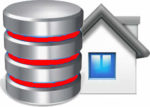Maximise the New Capabilities of the Latest Database Release
As you would expect once a new version of the Oracle database is launched, new books are published soon after, and the New Features book in my mind is one of the most important if you have been using Oracle for a number of years, as you only want to know about the latest features in 11g.
The 11g New Features begins by telling you how to install the 11g database, which is a straightforward task and very much like the 10g install. There are more pages given over to installing 11g as an upgrade, which is possible as long as you are already using version 9.2.0.4, 10.1.0.2 or 10.2.0.1 If you are running an earlier version of Oracle 9i then you will need to upgrade to Oracle 10g first.
The second chapter covers the new management features of 11g, this includes the new DDL WAIT option and the new add column functionality. IN Oracle database 10g by default DDL commands would not wait if the object was locked, instead an error would be generated and the attempted change would fail with an ORA-00054. Now in Oracle 11g there will be no error returned and the change will be executed without a wait being required.
The third chapter covers New Availability and Recovery Features. The main new feature in this chapter is the fault diagnosability infrastructure. This infrastructure is designed to assist in preventing, detecting, diagnosing and resolving new problems such as database bugs and various forms of corruption.
The following chapters are Oracle Database Change Management, Oracle Database 11g Security and Oracle Database BI and Data Warehousing New Features. IN the BI and Data Warehousing chapter there are new functions such as interval partitioning and virtual columns which allow you to define a column that contains derived data within the database. There is also new PIVOT and UNPIVOT clauses which can be used in SELECT statements.
One of the most interesting chapters is the Application Development new features, in this chapter new features include being able to create a trigger as disabled or enabled, there is a new SIMPLE_INTEGER datatype and a new PL/SQL continue statement.
The final chapters are about Performance Tuning and a final chapter covers other new features and enhancements including the XMLDB new features. The final chapter contains the author’s favourite Top 10 new features of 11g.
As usual the Oracle Press New Features book is really good and contains everything you need to know about the new Oracle 11g. Definitely worth a read if you are going to be using Oracle Database 11g anytime soon.

